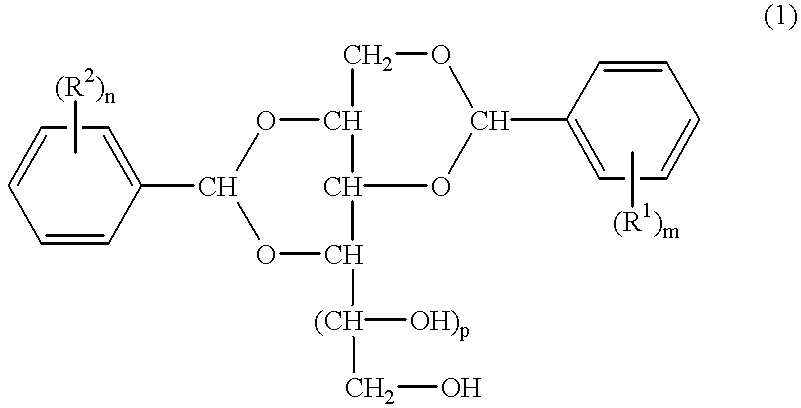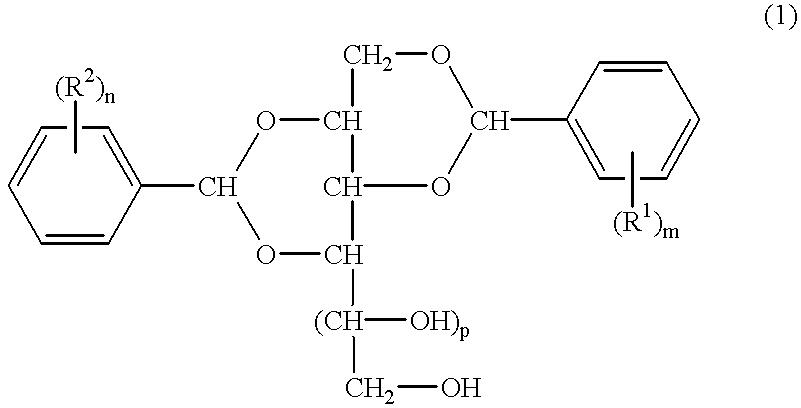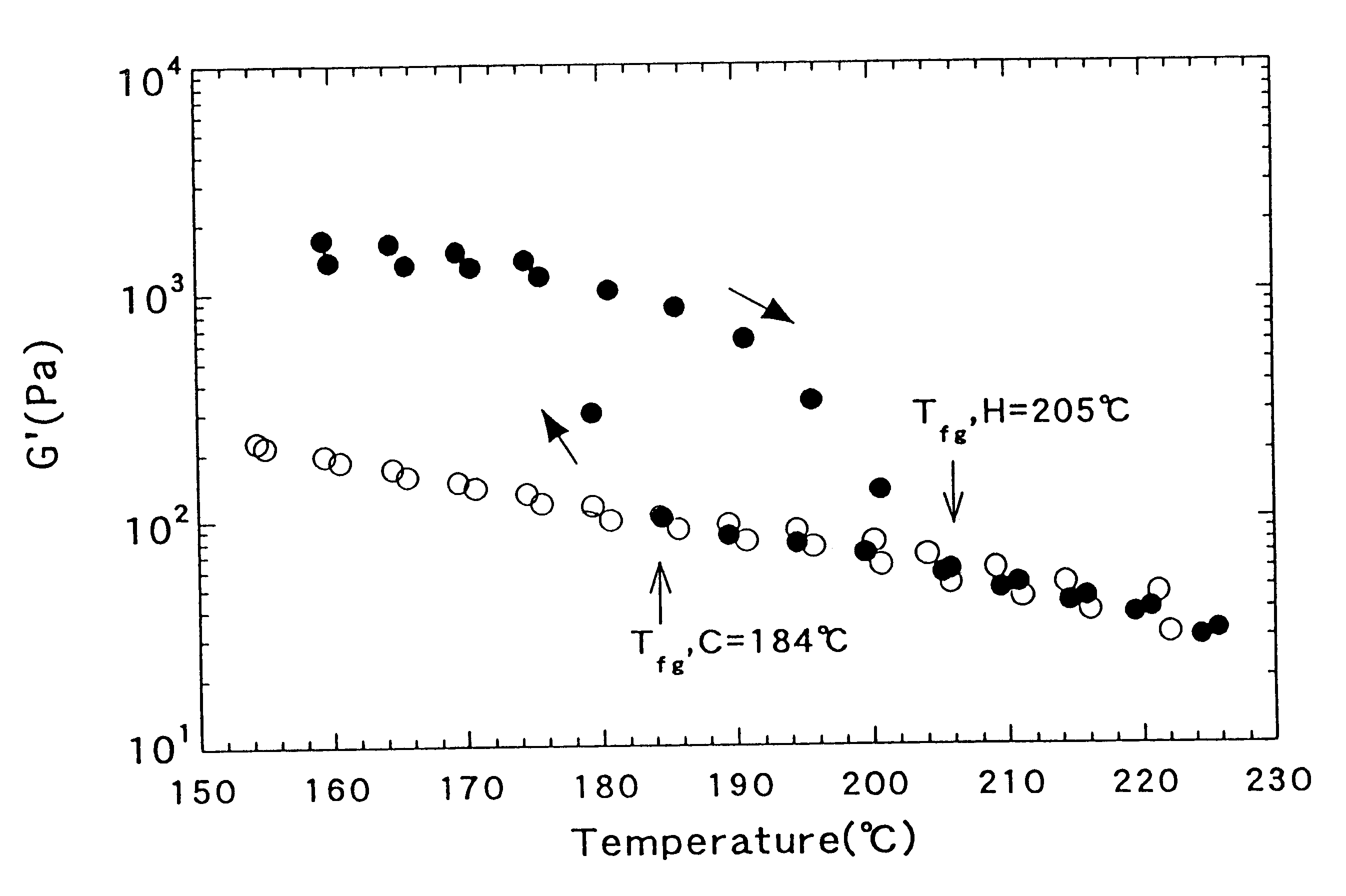Orientated gel molding method of polyolefin based resin composition
a polyolefin based resin and gel molding technology, applied in detergent compositions, detergent compounding agents, other domestic articles, etc., can solve the problems of failure to achieve the desired effect, no research done on molding methods, no proposal made on molding methods that pay attention to the presence or absence of network-like crystals
- Summary
- Abstract
- Description
- Claims
- Application Information
AI Technical Summary
Benefits of technology
Problems solved by technology
Method used
Image
Examples
example 1
Mixed together in powder forms were 100 wt. parts of block polypropylene (containing 4 wt. % of ethylene as a comonomer component, MI=30), 0.05 wt. parts of calcium stearate (an alkaline compound), 0.05 wt. part of Irganox 1010 (trade name, product of Ciba-Geigy), 0.05 wt. part of Irgafos 168 (trade name, product of Ciba-Geigy), 0.15 wt. part of stearyl monoglyceride and 0.4 wt. part of 1,3:2,4-bis-O-(3,4-dimethylbenzylidene)sorbitol. The mixture was melted by heating, extrusion-molded at a resin temperature of 255.degree. C. The extrudate was water-cooled to room temperature, and cut into pellets.
Using the resulting gel pellets, test pieces were prepared by the orientated gel injection molding method in which the resin temperature was set to 180.degree. C. and the mold temperature was set to 30.degree. C. From temperature dependence of G' obtained from the dynamic viscoelasticity test, it was revealed that T.sub.fg,C and T.sub.fg,H of the system were found to be T.sub.fg,C=185.degr...
example 2
Test pieces were prepared by following the procedure of Example 1 with the exception of using 0.05 wt. part of lithium stearate in place of calcium stearate. This system had a T.sub.fg,H of 207.degree. C., indicating that network-like crystals were present in the molten resin at the resin temperature of 180.degree. C. Further, the test pieces were tested to determine the properties, and found to have a Tc of 129.degree. C., an FM of 139 kg / mm.sup.2, and a GL of 120%.
example 3
Test pieces were prepared by following the procedure of Example 1 with the exception of adding 1.0 wt. part of sodium benzoate, together with the other additives. This system had a T.sub.fg,H of 205.degree. C. The test pieces were tested to determine the properties, and found to have a Tc of 129.degree. C., an FM of 140 kg / mm.sup.2, and a GL of 120%.
PUM
| Property | Measurement | Unit |
|---|---|---|
| melting point | aaaaa | aaaaa |
| melting point | aaaaa | aaaaa |
| temperature | aaaaa | aaaaa |
Abstract
Description
Claims
Application Information
 Login to View More
Login to View More - R&D
- Intellectual Property
- Life Sciences
- Materials
- Tech Scout
- Unparalleled Data Quality
- Higher Quality Content
- 60% Fewer Hallucinations
Browse by: Latest US Patents, China's latest patents, Technical Efficacy Thesaurus, Application Domain, Technology Topic, Popular Technical Reports.
© 2025 PatSnap. All rights reserved.Legal|Privacy policy|Modern Slavery Act Transparency Statement|Sitemap|About US| Contact US: help@patsnap.com



